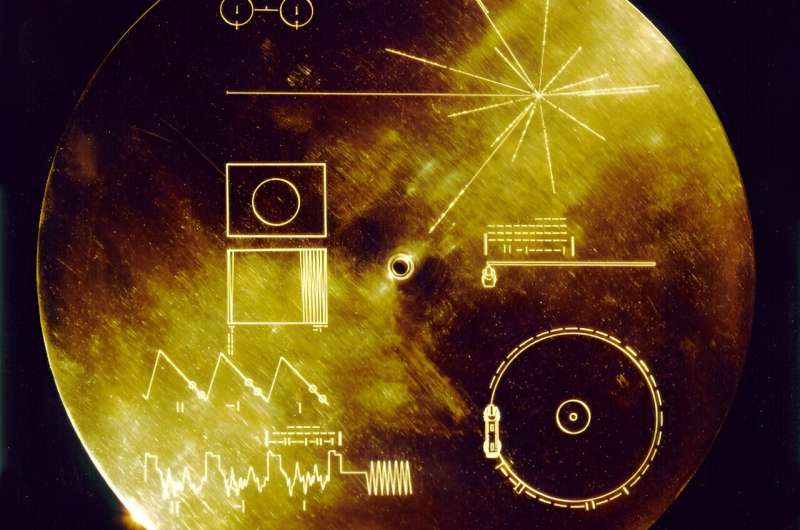This article has been reviewed according to Science X's editorial process and policies. Editors have highlighted the following attributes while ensuring the content's credibility:
fact-checked
reputable news agency
proofread
NASA back in touch with Voyager 2 after 'interstellar shout'

NASA has succeeded in re-establishing full contact with Voyager 2 by using its highest-power transmitter to send an "interstellar shout" that righted the distant probe's antenna orientation, the space agency said Friday.
Launched in 1977 to explore the outer planets and serve as a beacon of humanity to the wider universe, it is currently more than 12.3 billion miles (19.9 billion kilometers) from our planet—well beyond the solar system.
A series of planned commands sent to the spaceship on July 21 mistakenly caused the antenna to point two degrees away from Earth, compromising its ability to send and receive signals and endangering its mission.
The situation was not expected to be resolved until at least October 15 when Voyager 2 was scheduled to carry out an automated realignment maneuver.
But on Tuesday, engineers enlisted the help of multiple Earth observatories that form the Deep Space Network (DSN) to detect a carrier or "heartbeat" wave from Voyager 2, though the signal was still too faint to read the data it carried.
In a new update on Friday, NASA's Jet Propulsion Laboratory (JPL), which built and operates the probe, said it had succeeded in a longshot effort to send instructions that righted the craft.
"The Deep Space Network used the highest-power transmitter to send the command (the 100-kw S-band uplink from the Canberra site) and timed it to be sent during the best conditions during the antenna tracking pass in order to maximize possible receipt of the command by the spacecraft," Voyager project manager Suzanne Dodd told AFP.
This so-called "interstellar shout" required 18.5 hours traveling at light speed to reach Voyager, and it took 37 hours for mission controllers to learn whether the command worked, JPL said in a statement.
The probe began returning science and telemetry data at 12:29 am Eastern Time on August 4, "indicating it is operating normally and that it remains on its expected trajectory," added JPL.

Mankind's beacon
Voyager 2 left the protective magnetic bubble provided by the Sun, called the heliosphere, in December 2018, and is currently traveling through the space between the stars.
Before leaving our solar system, it explored Jupiter and Saturn, and became the first and so far only spacecraft to visit Uranus and Neptune.
Voyager 2's twin Voyager 1 was mankind's first spacecraft to enter the interstellar medium, in 2012, and is currently almost 15 billion miles from Earth.
Both carry "Golden Records"—12-inch, gold-plated copper disks intended to convey the story of our world to extraterrestrials.
These include a map of our solar system, a piece of uranium that serves as a radioactive clock allowing recipients to date the spaceship's launch, and symbols that convey how to play the record.
The contents of the disks, selected for NASA by a committee chaired by legendary astronomer Carl Sagan, include encoded images of life on Earth, as well as music and sounds that can be played using an included stylus.
For now, the Voyagers continue to transmit back scientific data, though their power banks are expected to be eventually depleted sometime after 2025.
They will then continue to wander the Milky Way, potentially for eternity, in silence.
© 2023 AFP





















